A journey inside Lebanese cuisine
Lebanese cuisine is very popular not only among Arabs but also globally, it is a strong competitor to French and Italian cuisine. You rarely find a country without Lebanese restaurants, as it is a cuisine that suits all tastes. The popularity of Lebanese recipes is not only because of their delicious taste but also because most Lebanese recipes rely on providing healthy, nutritious and delicious dishes at the same time.
Show key points
- Lebanese cuisine enjoys international popularity due to its delicious flavors, health benefits, and cultural richness, making it a global competitor to French and Italian cuisines.
- A hallmark of Lebanese food is its reliance on fresh, unprocessed ingredients such as vegetables, olive oil, garlic, and lemon, which contribute to both taste and nutrition.
- Mezze, or Lebanese appetizers, play a central role in meals and include a wide variety of hot and cold dishes like tabbouleh, fattoush, hummus, and kibbeh, some of which have numerous variations.
- ADVERTISEMENT
- The cuisine is enhanced by distinctive spices and sauces, including the Lebanese Seven Spices blend, tahini-based sauces, and molasses, which give depth to a wide range of traditional dishes.
- From savory pastries like manakish and meat pies to hearty grilled main courses and rice dishes, Lebanese cuisine offers a diverse and satisfying menu for every meal.
- Lebanese desserts, rich in ingredients like semolina, nuts, and cream, vary widely between regions and include popular treats like Layali Lebnan, Saraya, and traditional ice creams.
- Gastronomic tourism in Lebanon is thriving, with food markets, cooking festivals, and culinary tours attracting visitors who seek to explore the country’s rich culinary heritage.
Lebanese cuisine is rich in vegetables, meat, grains, olive oil, garlic and lemon, along with special flavors such as romaine molasses and spices such as thyme, and sauces such as garlic, coriander mixture and others, which adds a distinctive taste to Lebanese cuisine. Lebanese cuisine uses mainly fresh produce, and you rarely find use for preserves or processed foods. The Lebanese restaurant attracts you gradually, starting with appetizers or Lebanese mezze, which vary from cold and hot to special salads, from grilled meats in a healthy way to delicious desserts and traditional and international drinks.
Recommend
Syrian cuisine shares some recipes with Lebanese cuisine, although it does not gain international fame. If you are a history buff, you will realize that Lebanese cuisine is influenced by the cooking of other cultures such as Arab, Ottoman, Middle Eastern and Mediterranean cuisines. You cannot separate Lebanese cuisine from the culture and identity of any Lebanese, as it is your gateway to understanding the people who love life, fun and the pleasure of food. Food in Lebanon is a daily celebration of life and a pleasure for the eyes with its diverse colors and distinctive flavors.
Cold and hot mezze in Lebanese cuisine
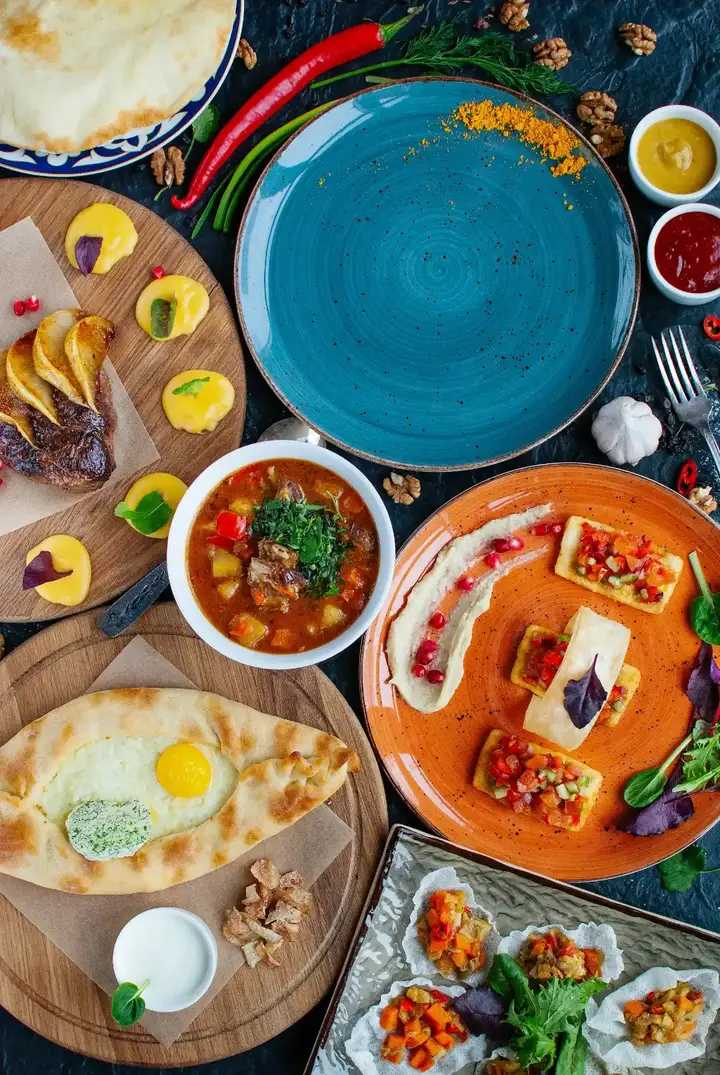
Appetizers come to the fore for many people and some even prefer them to the main meal, and Lebanese appetizers are suitable for the beginning of a healthy, rich and satisfying meal, and are also suitable as snacks or for friends' evenings. Appetizers or mezze are served cold, such as salads such as tabbouleh prepared from fresh vegetables such as parsley, tomatoes with bulgur, lemon, thyme, fattoush salad containing tomatoes, cucumbers, radishes and mint with fried or toasted bread, along with other salads such as hummus with tahini or eggplant muttabal or cowpea, okra with oil and stuffed with cold vine leaves with olive oil.
Hot appetizers such as chicken liver with pomegranate molasses and fried grilled cheese chips, spinach and meat pies, sambousek or fried kibbeh are made of freekeh and ground bulgur. Don't be surprised to hear a Lebanese tell you that there are about 70 different types of kibbeh, including vegetarian kibbeh, such as chickpea kibbeh and lentils, stuffed with meat, pine nuts and onions. There are also sausages, sausages with pomegranate molasses and other delicacies that precede the main course and are the most popular among Lebanese food connoisseurs.
Lebanese Cuisine Spices & Sauces
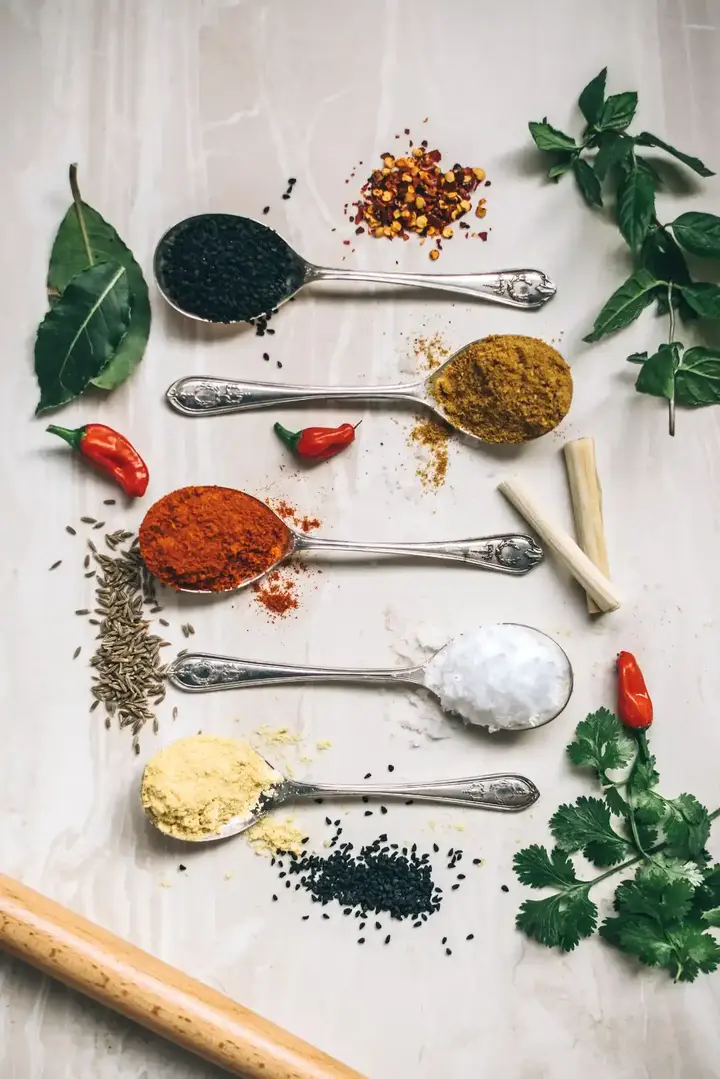
Lebanese cuisine is based on non-spicy spices such as white and black pepper, sumac, thyme, anise, cloves, cumin, nutmeg, ginger and cardamom, and garlic is included in many Lebanese cuisine meals for its unique flavor and medicinal benefits as well. You must have heard of the seven Lebanese spices being used in a lot of dishes such as soups, salads, rice and kibbeh. The Lebanese Seven Spices mixture contains black pepper, cinnamon, cloves, coriander, cumin, nutmeg and bell pepper and is also called Jamaica, and some families add other ingredients such as fenugreek, cardamom and ginger.
Lebanese cuisine is also famous for using different sauces or sauces, some of which are inspired by other kitchens and mix these sauces or serve next to grills and other dishes, and we mention some of them such as tahini, corn texts, Roman molasses, garlic mixture, coriander and tomato sauce, and hot special is used with some meals such as sausages, but it is not common in Lebanese cuisine.
Lebanese Kitchen Pastries
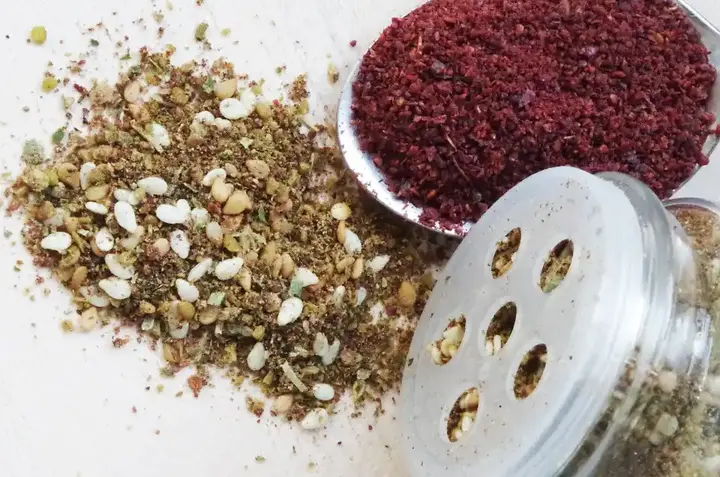
Lebanese pastries are eaten at breakfast, and some eat them alongside main courses at lunch. One of the most famous Lebanese pastries are labneh pies with mint, sumac and manakish, which are thin pies of dough with oil and stuffed with cheese or a mixture of cheese and thyme, ideal as a snack or as a "breakfast" as well as at the top of the menu of trips.
The most distinctive feature of manakish is thyme, as it is an antioxidant, protects the body from diseases, helps clean the airway, and relieves cough symptoms, and you will find that thyme is an essential ingredient in many Lebanese meals. There is also meat with dough which is a thin layer of dough stuffed with flavored meat and contains tomatoes, onions, Roman molasses and spices.
Main courses in Lebanese cuisine
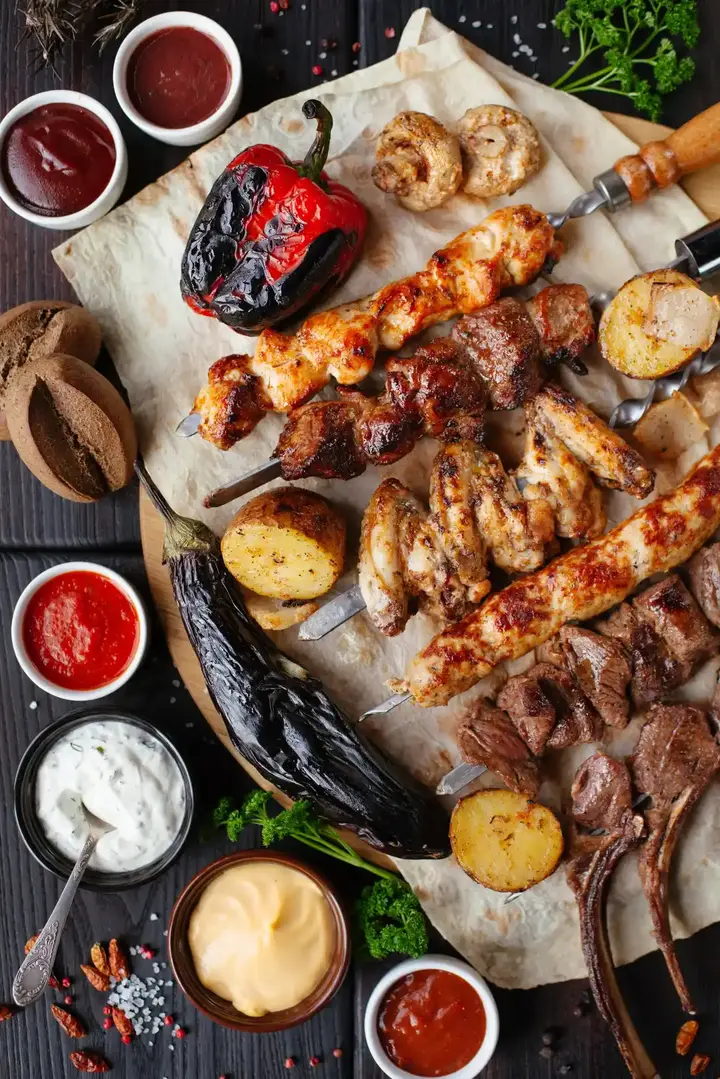
Lebanese cuisine is famous for grills, which is the settlement of meat and poultry by grilling. Meat grilling offers delicious and healthy dishes at the same time, and meat kebab and grilled chicken shish tawook with tomatoes, onions, peppers and eggplant are the most famous dishes of Lebanese grills. The grills also have excellent meals for the family atmosphere and picnic food with friends.
One of the main dishes is Lebanese chicken kabsa and fatteh chickpeas and mujaddara, a popular dish in Lebanon high in nutritional value and consists of rice, lentils and fried onions for decoration and is prepared in other areas of Lebanon with bulgur and lentils and served with various pickles. Also stew and rice with meat with chicken and grim with meat, chicken, spicy fish and Lebanese molokhia. As well as Musakhan rolls with Lebanese bread, which is stuffing Lebanese bread with boiled chicken, onion wings marinated with sumac, cumin and salt with olive oil in the form of fingers such as spring rolls and frying.
Do not forget about lentil soup, meat, vegetable fatteh with eggplant and chickpeas and lamb tongue fatteh with yogurt. Manti is also pieces of dough stuffed with lamb with onions and spices and served with yogurt sauce, which you can also eat in Turkey. As for the Lebanese shawarma, which is similar to the Syrian shawarma with different spices, and you find it many streets in Lebanon, but the Syrian shawarma surpasses the Lebanese in terms of taste and popularity.
Lebanese Cuisine Dessert

Lebanese cuisine is very diverse, especially as it moves from one city to another, and the common ingredients of Lebanon dessert are semolina, rice, nuts such as walnuts, pistachios, cheese and cream with orange blossom. We mention the most famous desserts such as Layali Lebanon, which are the most famous in the evenings and gather families and friends. Layali Lebanon consists of semolina, cream, custard or cream and garnished with pistachios. The popular dessert is Saraya bread, which is toasted topped with cream, milk and starch with orange blossom water and nuts. There is also the sweetness of Tripoli cheese, which is commonly eaten in the holidays, as well as rubbed with almonds or pistachios stuffed with cream, madlouqa, namoura, rice mafta, turmeric, rows, ice cream and Lebanese ice cream. As well as Siniora biscuits, almonds and white cotton candy, the milk buoy is prepared from sheep's milk, flour, sugar and orange bitter.
Drinks and Drinks in Lebanon

You will be surprised when you hear that white Lebanese coffee is a completely caffeinated coffee, as it consists of water, sugar, blossom water or a drop of blossom spirit, and is served in tea cups and is useful because of its calming effect on the body. As for the djellab with pine nuts, it is a concentrated jellab "soaked with dates with incense", water and blossom water, decorated with raw nuts and roasted pine nuts, and is considered a traditional drink and is found especially in the Lebanese countryside. As well as ayran, which is yogurt mixed with water and salt, and syrup Albosfir "sapphire or orange orange".
This is in addition to the drinks that Lebanon shares with its sisters from other Arab countries, such as tamarind, carob, Qamaruddin, licorice, other fruit drinks, as well as various fruit cocktails. Lebanon is famous for its alcoholic drink called "Race", which is the product of the distillation of anise with grapes.
Lebanese cuisine and gastronomic tourism
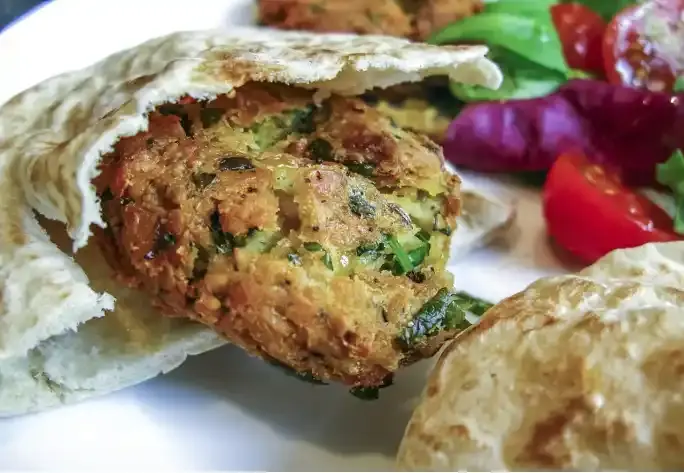
Just as you hear about medical tourism and beach tourism, there is also food tourism, and you may be surprised to hear that hundreds of tourists flock annually to visit Lebanon to enjoy Lebanese food, as it is one of the most important tourist attractions in Lebanon. Lebanese restaurants are one of the most important destinations for visitors from all over the world, as food is the biggest contributor to promoting cultural exchange between peoples.
Cooking competitions and events are organized annually with the aim of developing the economy and tourism, preserving Lebanon's ancient food heritage, and developing various cooking methods. Sightseeing tours are also organised to explore local food and interest street food. The Food Market Festival is also held for the same purpose and its slogan is "Our summit brings us together", and the festival is a large market for food and music and tours Lebanon throughout the year, where Lebanese cuisine and food from other international cuisines are tasted at reasonable prices. The festival is a mobile cultural edifice.
As for the food markets, the most famous of which is "Souk El Tayeb", which aims to protect small farmers in Lebanon and enable them to compete with the food trade by providing an outlet where they sell their products of juices, jams, dairy and organic products, and the market is held weekly on Saturdays in the Saifi area.








